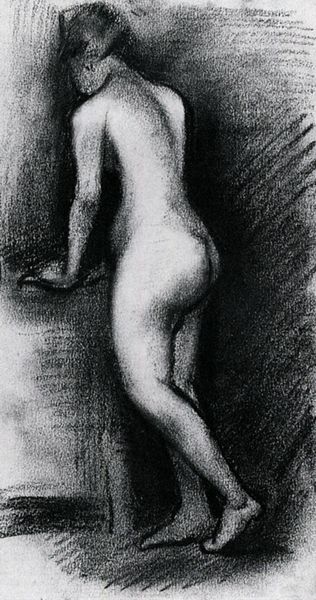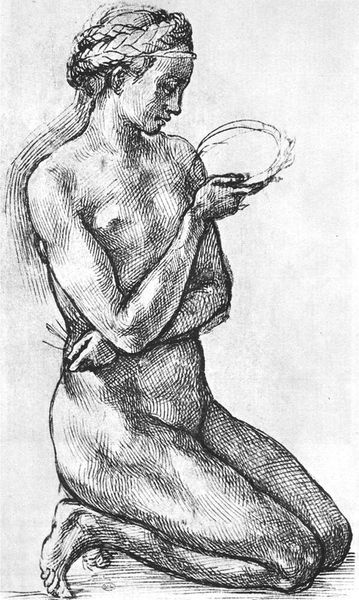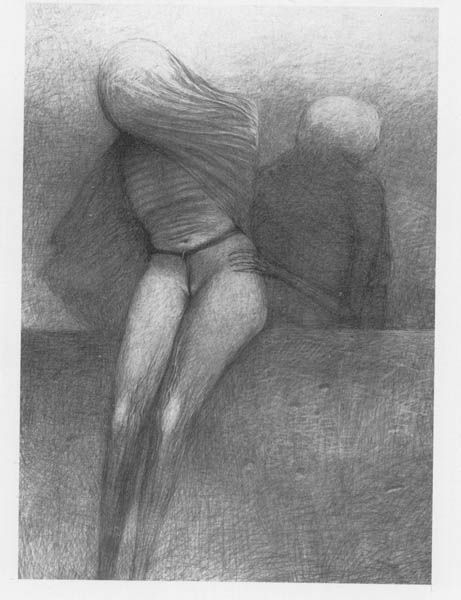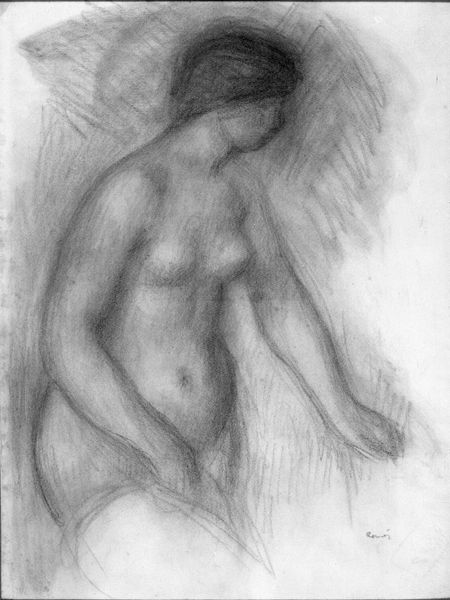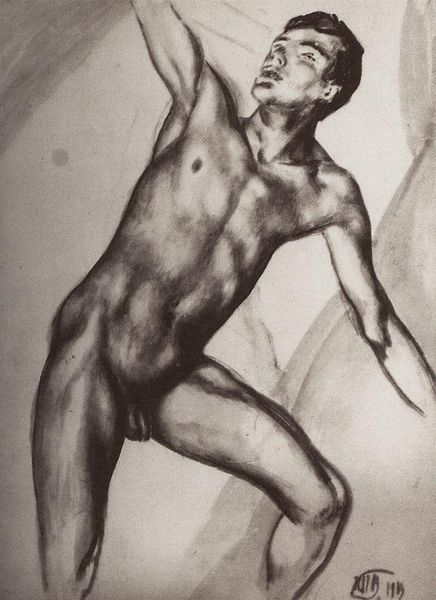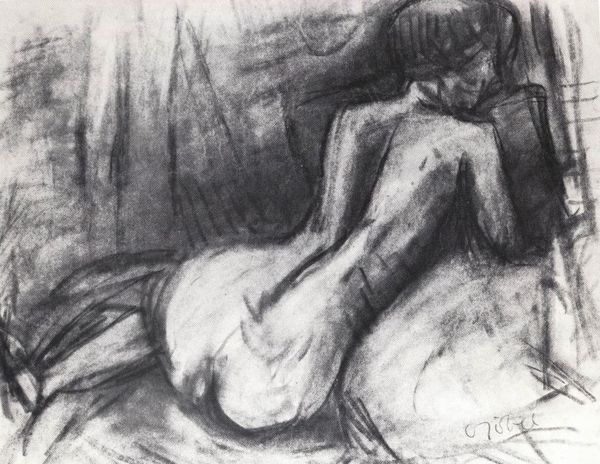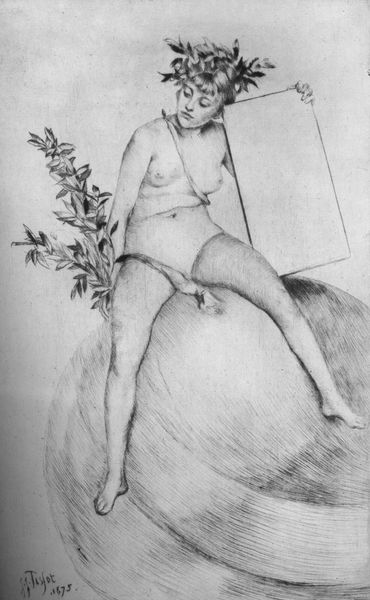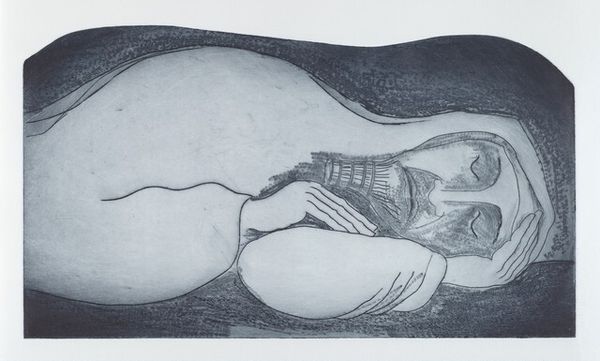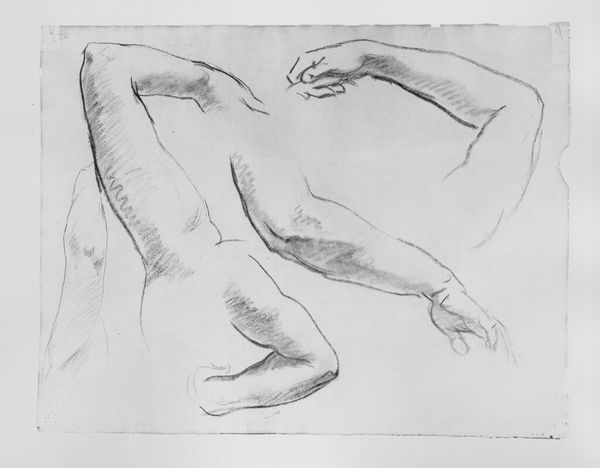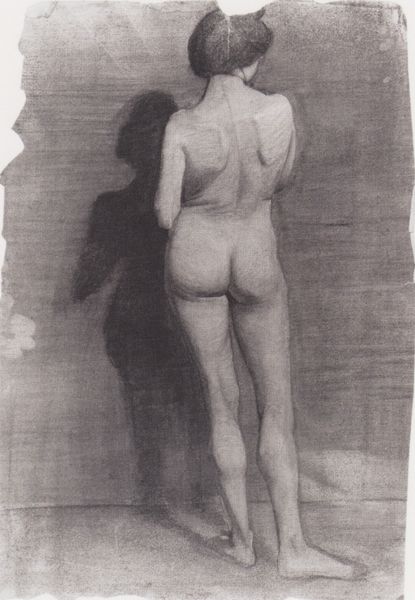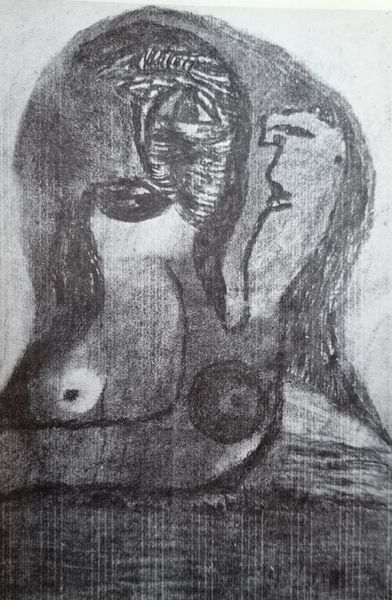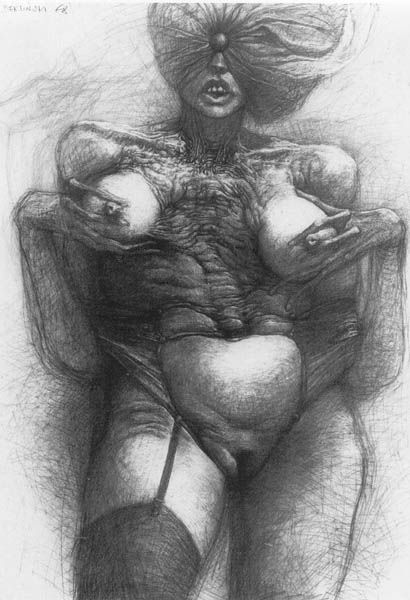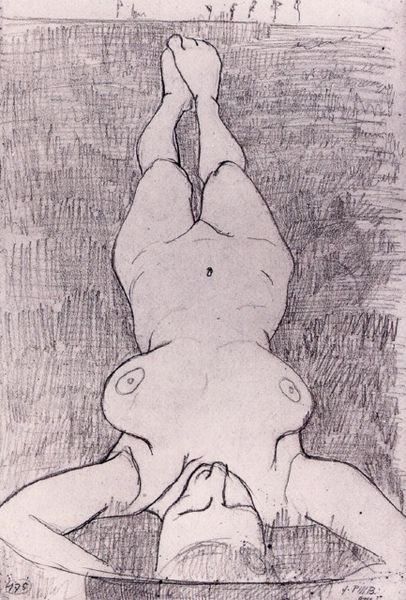
Copyright: Francis Bacon,Fair Use
Curator: This stark, black and white drawing is Francis Bacon's "The Crucifixion," created in 1933. It's primarily charcoal on paper, a medium allowing for incredibly textured and shaded surfaces. Editor: The first word that comes to mind is "anguish." There's an intense emotional weight here, a rawness in the way Bacon renders the figure that’s deeply unsettling. It's almost unbearable to gaze at the piece for a long time, that skull sitting in the darkness reinforces it. Curator: It is incredibly evocative. Bacon often wrestled with themes of suffering, the body, and the human condition. This particular drawing comes at a time where history provided context. His materials – charcoal, with its inherent fragility – speak to that same vulnerability. Do you think that Bacon's social background affected the type of material he would choose? Editor: Absolutely. It's important to consider that Bacon, working in the early 1930s, was witnessing the rise of fascism and the build-up to the Second World War. These global and national movements undeniably shaped his visual vocabulary, so this depiction, beyond the literal crucifixion narrative, speaks to broader anxieties about mortality. There's nothing romantic about this image; it looks unfinished like it was a work still in progress. Curator: The lack of detail certainly contributes to the feeling that the art piece is not complete. Bacon also was known for his study of different artists such as Velázquez and Picasso. "The Crucifixion" almost suggests he was experimenting with figuration in the moment when the art piece was created, wouldn't you say? Editor: I completely agree. It is fascinating how such a well known theme or historical painting transforms through abstraction into this rough state that the image shows, full of distortions and blurring which ultimately conveys emotional suffering. Curator: Reflecting on this drawing, I see a potent reminder of how artists can employ even the humblest materials to convey profound socio-historical truths. Editor: And I am still struck by how such stark simplicity evokes so much raw, visceral emotion about the human condition in Francis Bacon's "The Crucifixion."
Comments
No comments
Be the first to comment and join the conversation on the ultimate creative platform.
